
Shrimp flies have always been popular for fly fishermen and especially for saltwater fly fishermen they are a “must-have” in the box. The Scandinavian coastal fishing for sea run brown trouts is now one of the cornerstones of Danish fly fishing and the Danish sea trout love shrimp flies. In this week’s blog, we’ll focus on a new pattern that has gone from strength to strength and proven its effectiveness to coastal sea run brown trout.

Gradually, the Danish shrimp fly The piglet has become – if not world-renowned, then known in Europe as a really effective shrimp imitation. It was originally tied by the skilled Danish fly fisherman and flytyer Morten Øland in a natural gray version called Oeland’s Spey Shrimp. The use of the long pulsating Whiting Spey hackles created a vibrant and effective movement in the water and the sea trout loved it. Another skilled Danish sea trout fisherman Claus Eriksen has developed further on it and tied it in the well-known Salmon Pink color. It quickly became a popular – if not THE most popular – coastal fly in Scandinavia. Read more in a previous blog here
However, in the past year another shrimp fly has appeared, and this one we will take a closer look at now.
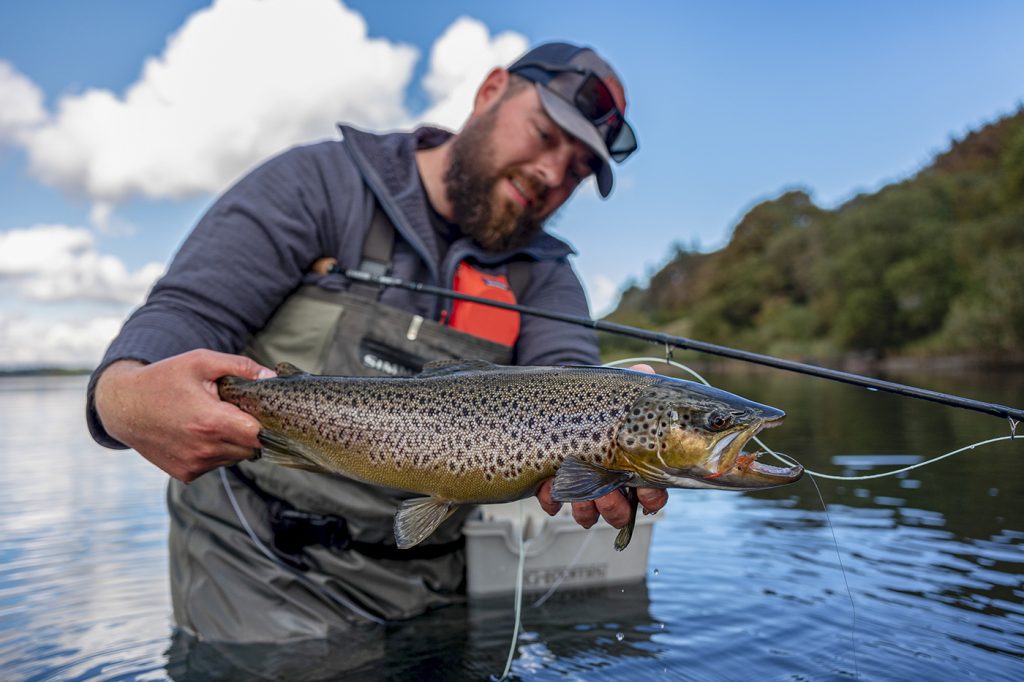
The Danish fly fisherman Troels Holstein Kaa is, apart from being a really skilled fly fisherman, also the man, who has “stolen” an incredible amount of sea trout along the Danish coasts. When we say “stolen” it is because the Danish name Høtyven is an abbreviation of “Havørred” (sea run brown trout) and “tyv” (thief). In the latest issue of the Danish magazine “Sportsfiskeren” published by the Danish Sport Fishing Association, Troels tells the whole story behind the effective fly – and we bring here a small excerpt of the article.

“In other words, it is with a certain authority that Troels Holstein Kaa opens the fly box and talks about the development of the coastal fly, which over the past six months has taken Scandinavian coastal fly fishermen by storm and spread like wildfire on social media. The fly’s name, The Pitchfork, i.e. the agreed abbreviation of The Sea Trout Thief, is in itself quite catchy, and some variations are already in circulation. Here Troels Holstein Kaa tells his own story about the creation of the Pitchfork.
“In the past, I haven’t really had much faith in the difference in the effect of the fly selection itself. I’ve never been particularly interested in patterns, and usually I’ve ended up doing my own twist on common coastal flies. As long as I believe in the fly, it can fish. I’m also not the type to often change flies in a day. I’d rather spend my time having the fly in the water. However, in connection with the development of the Pitchfork, I have become more sceptical, as I have experienced some serious catch differences on trips where I have been lucky enough to have the Pitchfork on the catch, while my fellow fishermen tried other bait and flies. No matter how we distributed ourselves and who took the lead, the pitchfork took the plug home. Let’s not dwell on the details, and instead just state that the Pitchfork can catch fish, Troels Holstein Kaa begins and continues:
“I have worked with this type of fly for many years, and when I tested the final pattern last autumn, The Pitchfork gave more than 200 sea trout in 20 fishing trips in a period from September to November. Of course, there were many small fish, but also good fish up to 70 centimeters among them. The colors in which the Pitchfork was introduced are adapted to spring and autumn fishing, but my overall idea of the fly is more of a type than an exact pattern. Now that the water is cooler, it’s obvious to dress the pitchfork in winter colors instead.”
Høtyven
Hook: Ahrex Light Stinger NS122 #4
Thread: White
Butt: Fluo. Orange Salmo Supreme dubbing
Eyes: Black Easy Shrimp Eyes, XS
Tail: Fluo. Orange Round Rubber Legs, Small samt Opal og Glow-in-the-dark Orange Flashabou and some ginger hackle fibres
Body: Tan STF dubbing
Hackle: Ginger hackle
Head: Fluo. Orange tying thread
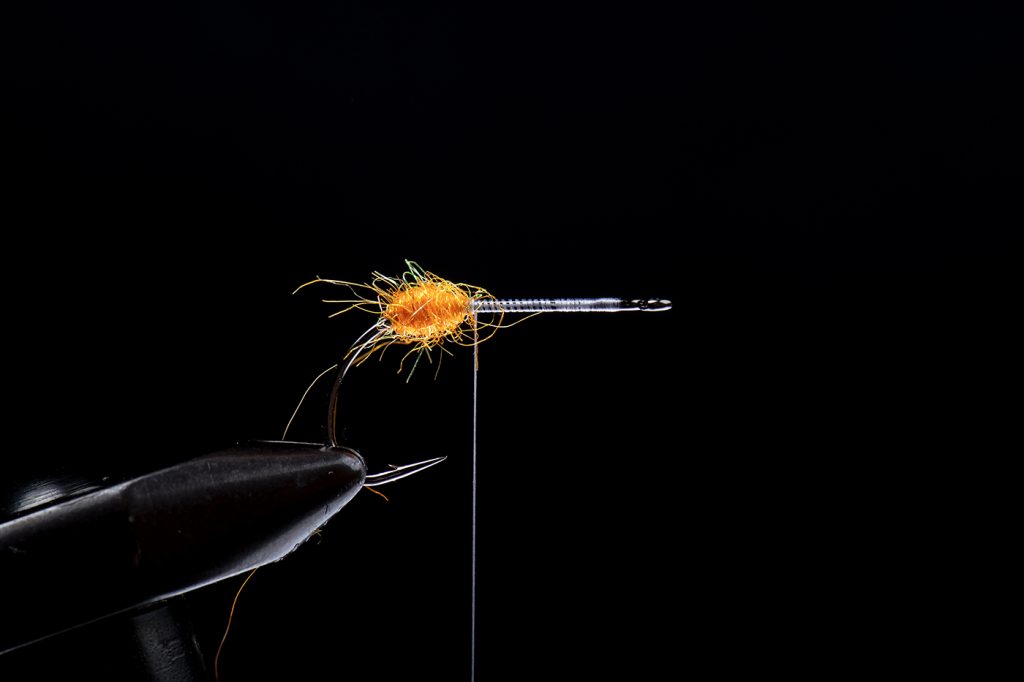
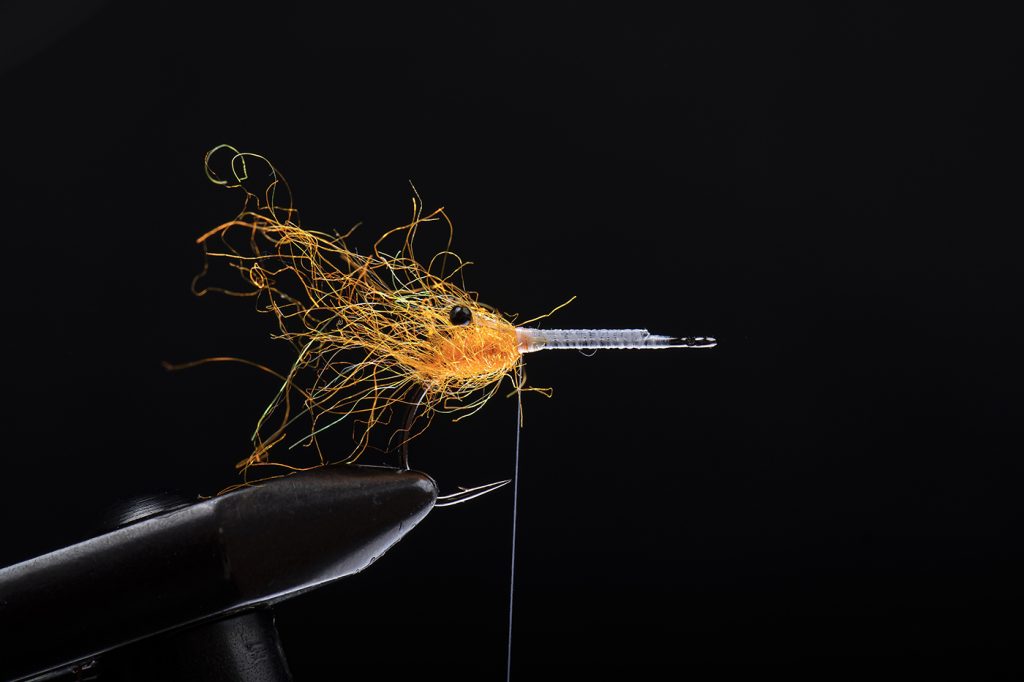
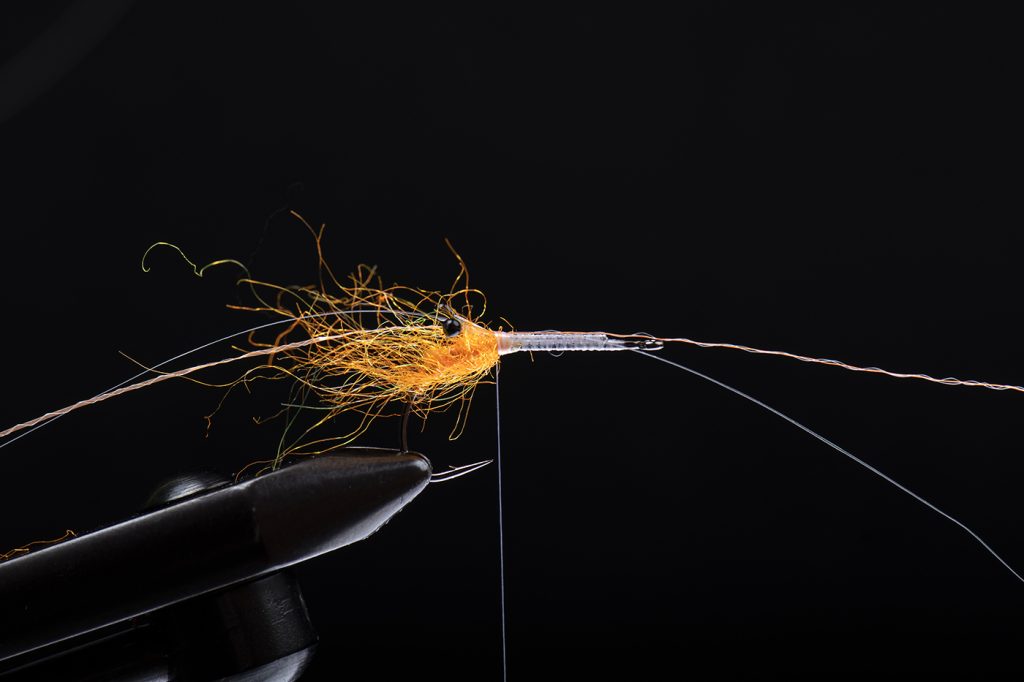
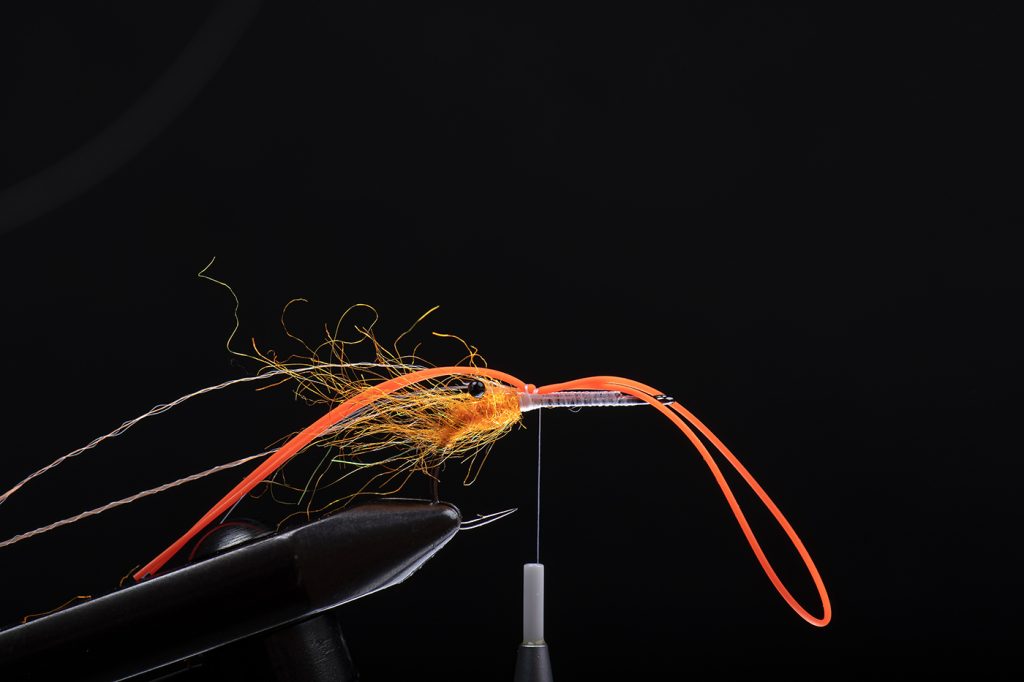

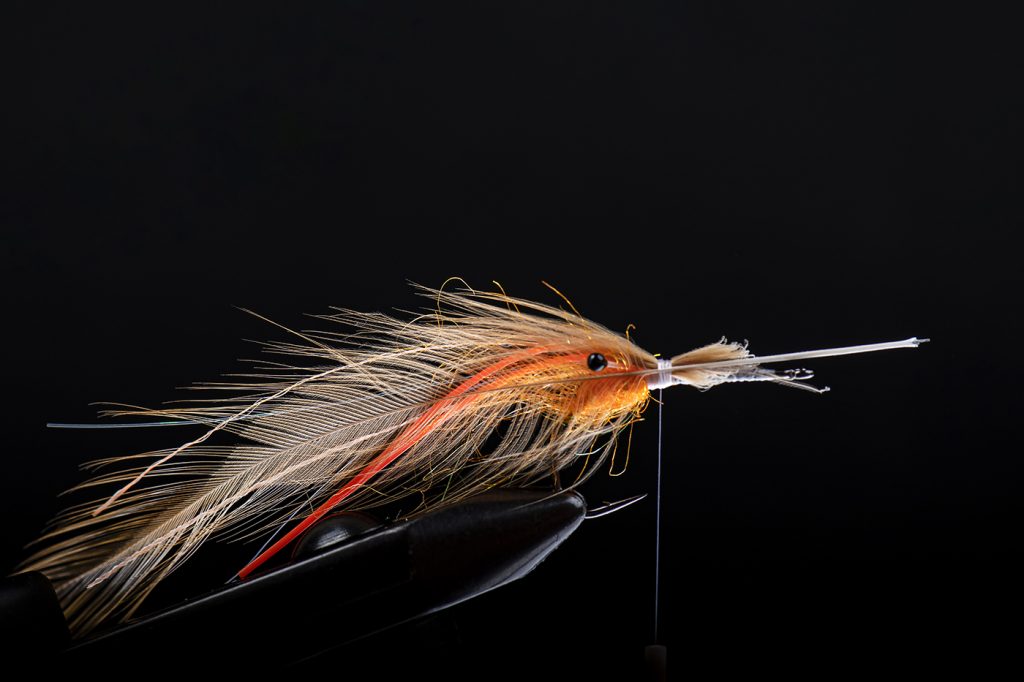
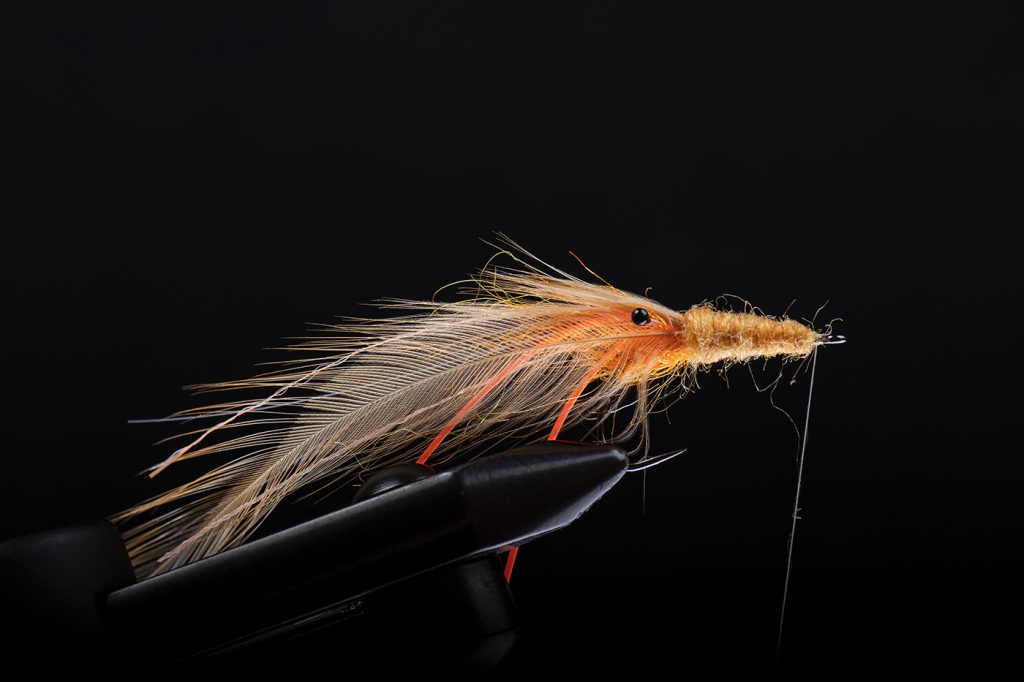
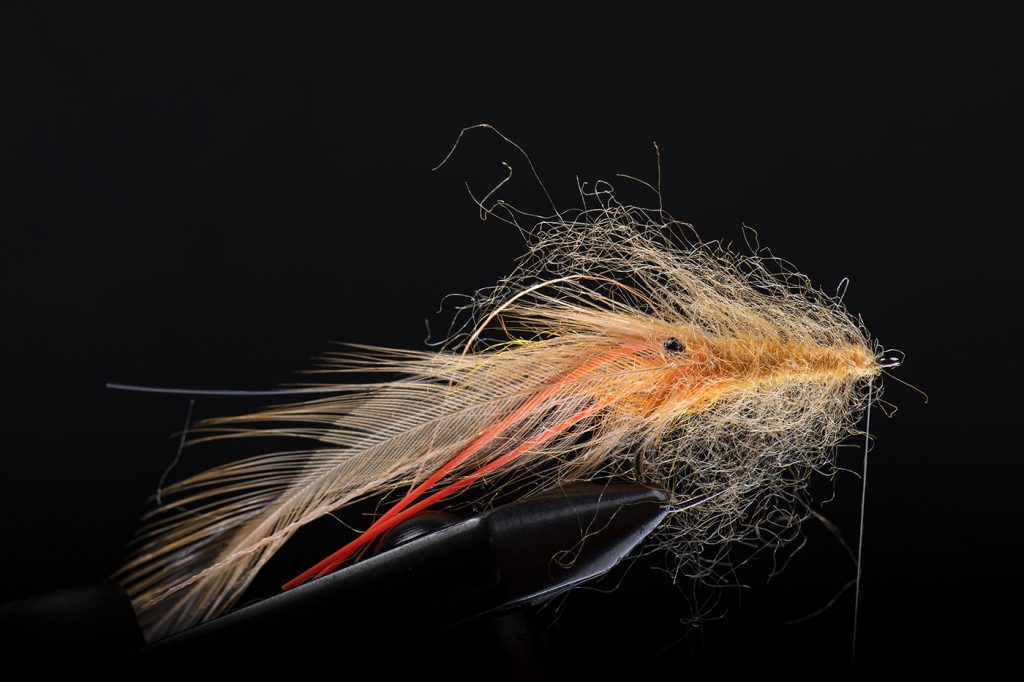
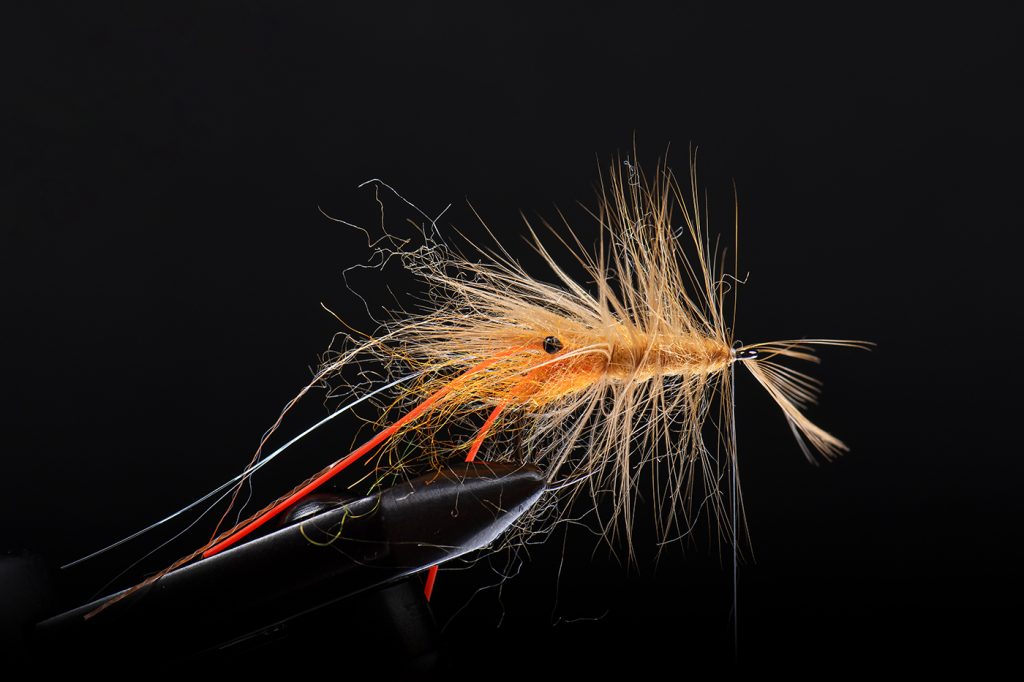

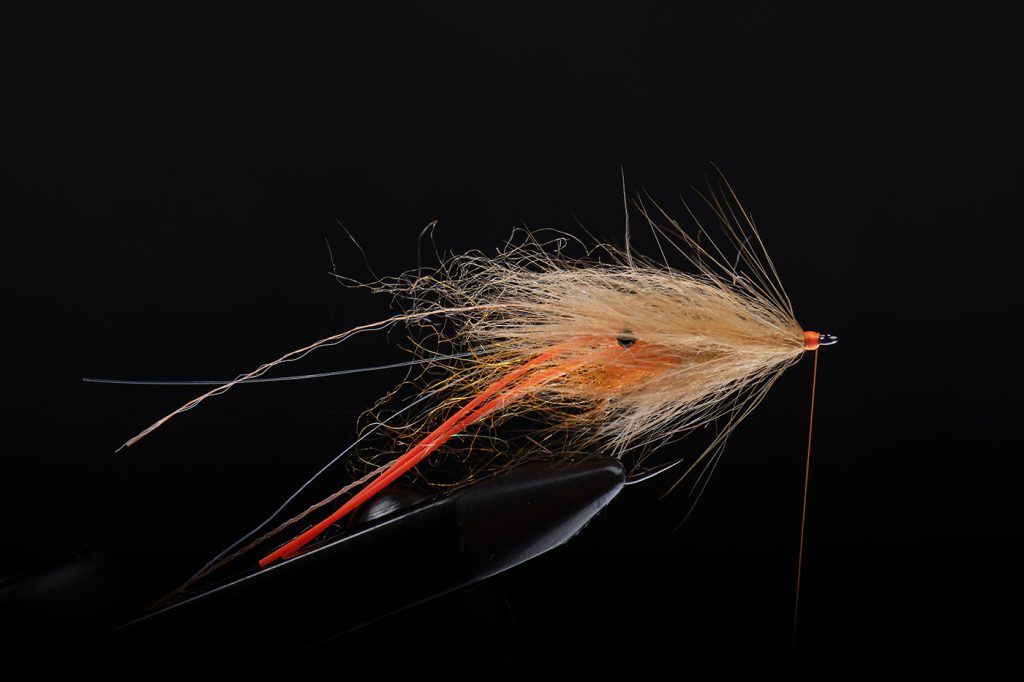
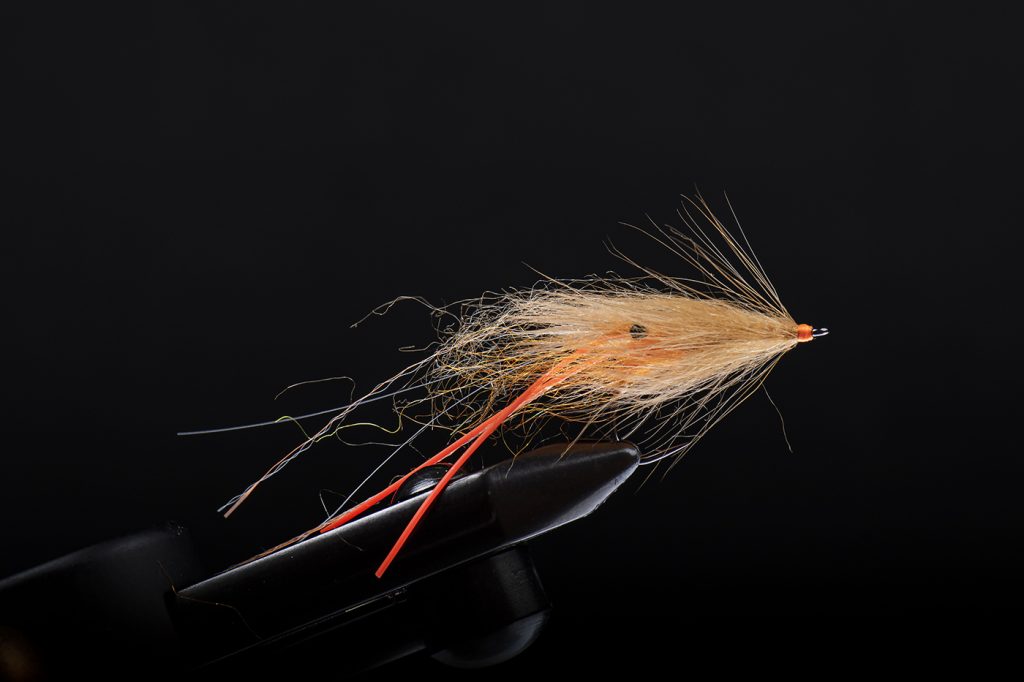
You can also see Troels tie the fly right here:

This weekend we are at another fair – this time in Sweden at the big Sportfishing Messan in Stockholm where Håkan Karsnäser and Morten Valeur will be present together with Hökensås Sportfiske. So please stop by for a chat.
